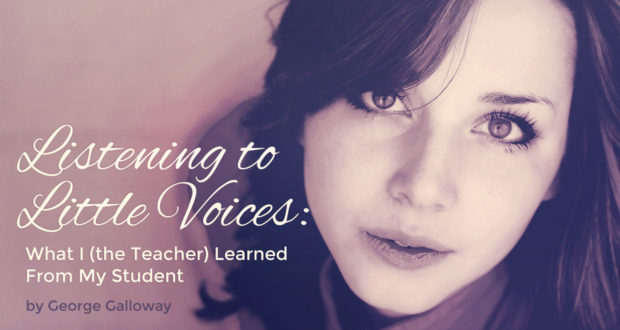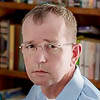When my daughter, Mary Kate, was in sixth grade at St. Joseph the Worker Elementary School, she presented some alarming and disturbing problems. From the outset of the school year, she had difficulty getting out of bed in the morning. Her weight had drastically increased, yet her appetite was puzzlingly disappearing. She complained of aches in her joints and itchy, sore skin.
A beautiful, long-legged, smiling, active and precocious girl had become a lethargic, unenergetic pre-teen who, for the first time in her life, lacked her natural inquisitiveness and perceptive ability to concentrate. My wife and I were growing more concerned by the day. Of course, she had seen her pediatrician a number of times, but the doctor seemed just as perplexed as we were. Perhaps it was just a stage, we convinced ourselves. “She’ll grow out of it,” was our mantra.
But Mary Kate didn’t. She got worse. She missed a full quarter of the school year. Things were getting precarious as our fears grew and the snow melted into the spring of 2001. Finally, Mary Kate’s pediatrician wisely recognized that this unknown malady was out of her purview. She directed us to the Children’s Hospital of Philadelphia to get some answers.
Prayers Answered
On the anticipated appointment day, we drove down to the city and entered the office of an astute, pediatric endocrinologist and an answer to our prayers. His name was Dr. Paul Thornton, a native of Dublin, Ireland. His keen, blue eyes took one look at Mary Kate and pronounced a diagnosis: “She has Hashimoto’s Disease,” he said quite matter-of-factly.
We trusted this man immediately. Dr. Thornton did all the requisite tests to prove his theory, and they all justified his instinctive, experienced calculations: my daughter’s thyroid was being attacked by her own immune system. Her body was slowly aging and dying.
Without the thyroid, her growth had been checked, possibly reversed, her cholesterol was at an amazing 580, and, within a year, without a proper diagnosis and treatment, she would have died. Praised be to God for our miracle in finding this doctor and this hospital.
God also provided us with another miracle. My wife had obtained a new job with increased income. I was a parochial school history teacher. We decided to bite the bullet, economically, and homeschool Mary Kate.
The response of some friends and family is worth noting. We were accused of depriving our precious child of social skills that could only be learned with interaction with other children her own age. Why would we possibly put our daughter at such risk? To alienate her from her peer group would leave lasting and unforgivable scars from which she might never recover. How dare we deviate from societal norms! It was unnatural and completely unorthodox.
Yes, it was. It was also, as I learned later, breathtakingly refreshing. Taken out of the pressurized norms of the edicts and demands of the socialized cohort of modern society, a child can take wing and fly independently, pursuing individual dreams without the restraints of peer pressure. A child can develop a personal sense of self-worth and the freedom to pursue her own dreams without restraint.
Finding our Direction
After careful research, I chose Seton for our homeschooling program. As an educator, I was impressed with Seton’s approach to homeschooling because I believe in incorporating spiritual learning into all facets of academic progression. I was pleased, and even surprised, that Seton shared my philosophy of education.
The idea is to measure pedagogy (sorry, the art or science of education) by establishing a baseline of student understanding and then planning a progression based upon student outcomes: not just what the teacher expects to see, but what the student has learned and demonstrated based upon measurable outcomes.
Moreover, by dovetailing Catholic teaching into all academic disciplines, subjects assumed to be diverse mesh into an integrated learning strategy, producing what professors of a bygone age would call a truly liberal arts education. This is achievable even at an elementary level if done slowly, because it introduces initial aspects of philosophy and theology for inquisitive young minds to digest in God’s good time. In other words, we can plant seeds without indoctrination.
But I went one step further. Using what I believe to be the greatest educational achievement of this or any age, the Socratic Method, I could allow the student, my daughter, in a one-on-one setting, to come to her own conclusions through judicious and focused question-and-answer sessions.
The World Changed
And then the unthinkable happened. On Tuesday, September 11, 2001, our world changed. My teaching changed. Her learning changed. We all changed.
We talked about it. We leaned on and learned from each other. She asked questions I couldn’t answer. I asked questions that she could. In spite of her supposed innocence, her naiveté in matters worldly, as we adults sometimes think we all understand, at times she became the teacher and I became the student.
She gleaned from the Seton program, without my help, the morsels of wisdom on her terms. Day by day, we made progress. She grew (literally, before my very eyes) into a beautiful young woman. I grew as the father-teacher I had always wanted to be.
We made time for each other. We sang and laughed and cooked meals to surprise Mommy and chuckled with joy doing it. We took long walks in the mornings as our version of PE and didn’t talk at all. We giggled as the leaves fell on us through that autumn and made snow angels when blankets of peaceful, perfect crystals fell from the heavens and crunched deliciously under our boots in December. It was the most memorable Advent of my life.
Marching Forward
Mary Kate’s health improved with needed medication, which she must have for the rest of her life, like a juvenile diabetic depends upon insulin, and became sustained by a newly created faith in mankind after a terrible tragedy mutually shared with her father. After what had happened to us and to our nation, I couldn’t ask for anything more than that.
If you have a child with a medical problem (notice I didn’t use the word issue: problems are real; an issue can sometimes be imagined), and take upon yourself the gift of homeschooling, then my advice is to take your time. Outcomes should be based upon your children’s understanding, not your expectations. Listen to their little voices.
Often, pearls of wisdom come not from our compilation of knowledge, but from a divine voice that whispers only in the ears of our children. After all, wisdom and knowledge are two completely different constructs.
It took a little girl to teach me that.
Header Image CC andrearosephotography

 Seton Magazine Catholic Homeschool Articles, Advice & Resources
Seton Magazine Catholic Homeschool Articles, Advice & Resources

